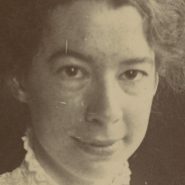By T. S. Eliot
[Full text omitted for copyright reasons. The following excerpt appears under fair use for educational and analytical purposes.]
“April is the cruellest month, breeding
Lilacs out of the dead land, mixing
Memory and desire, stirring
Dull roots with spring rain.”
From The Waste Land (1922) by T. S. Eliot. © Estate of T. S. Eliot. Quoted here under fair use for educational and critical commentary.
Analysis
T. S. Eliot’s “The Waste Land” is widely regarded as the defining poem of literary modernism — a complex, fragmented reflection on the spiritual and cultural decay of the early twentieth century.
Written in the aftermath of World War I, it captures a world stripped of coherence, faith, and meaning. Its collage-like structure, multiple voices, and interwoven mythic references revolutionized poetic form, influencing generations of writers.
Structure and Fragmentation
The poem is divided into five sections: “The Burial of the Dead,” “A Game of Chess,” “The Fire Sermon,” “Death by Water,” and “What the Thunder Said.”
Each segment presents a different voice or setting, shifting abruptly from scene to scene — from London streets to the River Thames, from mythic landscapes to personal confessions. This fragmentation mirrors the disintegration of postwar Europe. Yet the poem’s hidden architecture, drawn from myth and ritual, provides a skeleton of meaning beneath the chaos.
Myth and the Modern World
Eliot drew inspiration from anthropologist James Frazer’s The Golden Bough and Jessie Weston’s From Ritual to Romance, both of which explore fertility myths and the cycle of decay and renewal.
In “The Waste Land,” modern civilization becomes a sterile desert — a spiritual wasteland in which ancient patterns of renewal no longer function. The mythic method allows Eliot to unite the modern and the ancient, the individual and the universal.
By juxtaposing the past’s sacred rituals with the present’s emptiness, he exposes modern life’s loss of meaning.
Voices and Multiplicity
One of the poem’s most radical features is its polyphony — a chorus of fragmented voices that shift without warning.
There is no single narrator; instead, the poem becomes a mosaic of perspectives: the weary modern speaker, the clairvoyant Madame Sosostris, the disillusioned lovers, the voices of myth and scripture. This multiplicity captures both the alienation of modern consciousness and the plurality of experience in the modern city.
The poem’s language blends high culture and the colloquial, scripture and slang, evoking a world where sacred and profane coexist uneasily.
Imagery and Symbolism
The imagery of the poem oscillates between fertility and barrenness, life and decay. Water, a recurring motif, symbolizes both destruction and renewal: the drought of “The Fire Sermon” contrasts with the cleansing rain that concludes the poem.
Eliot’s recurring references to vegetation rites, death, and resurrection suggest a longing for spiritual rebirth. Yet renewal remains elusive; even the rain that falls at the end is ambiguous — both promise and irony.
Language and Allusion
Eliot’s allusive style is one of the poem’s most distinctive traits. “The Waste Land” draws on texts ranging from the Bible and Dante to Shakespeare, Wagner, and Eastern scriptures.
This intertextual layering reflects both cultural continuity and fragmentation. The reader must navigate a shattered world of quotations, where meaning emerges through resonance rather than narrative.
Eliot’s use of multiple languages — English, German, French, Sanskrit — evokes the cultural polyphony of a civilization at once vast and fractured.
Religion and Redemption
Despite its bleakness, “The Waste Land” is not wholly despairing. The closing section, “What the Thunder Said,” moves from desolation toward spiritual insight.
The Sanskrit refrain “Datta, Dayadhvam, Damyata” (“Give, sympathize, control”) offers a moral framework drawn from the Brihadaranyaka Upanishad. The final word — “Shantih shantih shantih” (“The peace which passeth understanding”) — gestures toward transcendence, even if it remains out of reach.
The poem’s ending thus balances between prayer and exhaustion, hope and irony.
Modernity and Alienation
At its core, “The Waste Land” is a poem of alienation — of individuals cut off from each other, from nature, and from faith. Its urban imagery — crowds crossing London Bridge, sterile conversations, mechanical sexuality — reveals a world in which life has become ritual without meaning.
Eliot’s genius lies in his ability to turn this despair into art, to create form out of fragmentation. The poem’s dissonance is deliberate: modern life itself is cacophony.
Sound and Rhythm
Eliot’s prosody is astonishingly varied. The poem alternates between lyrical passages of haunting beauty (“A woman drew her long black hair out tight”) and abrupt, flat statements (“HURRY UP PLEASE ITS TIME”).
This interplay of rhythm and tone mirrors the shifting moods of consciousness — from meditation to hysteria, from reverence to banality. The effect is musical yet unsettling, evoking the fragmentation of both language and thought.
Legacy and Influence
Upon its publication in 1922, “The Waste Land” transformed modern poetry. It shattered the conventions of Victorian coherence and Romantic emotion, replacing them with irony, fragmentation, and erudition.
Ezra Pound, who edited the poem, famously called it “the justification of the modern experiment.” A century later, its influence remains unmatched — echoing in poets from Auden to Eliot’s successors in postmodernism. Its vision of cultural dislocation continues to resonate in an age still seeking meaning amid noise.
Conclusion
“The Waste Land” stands as both diagnosis and elegy for modern civilization. It exposes the sterility of a world that has lost faith in renewal, yet its very existence affirms the possibility of beauty amid ruin.
Eliot’s fusion of myth, music, and modern despair creates a poem that is both lament and revelation — a song of fragments that continues to speak to the fractured human spirit.
